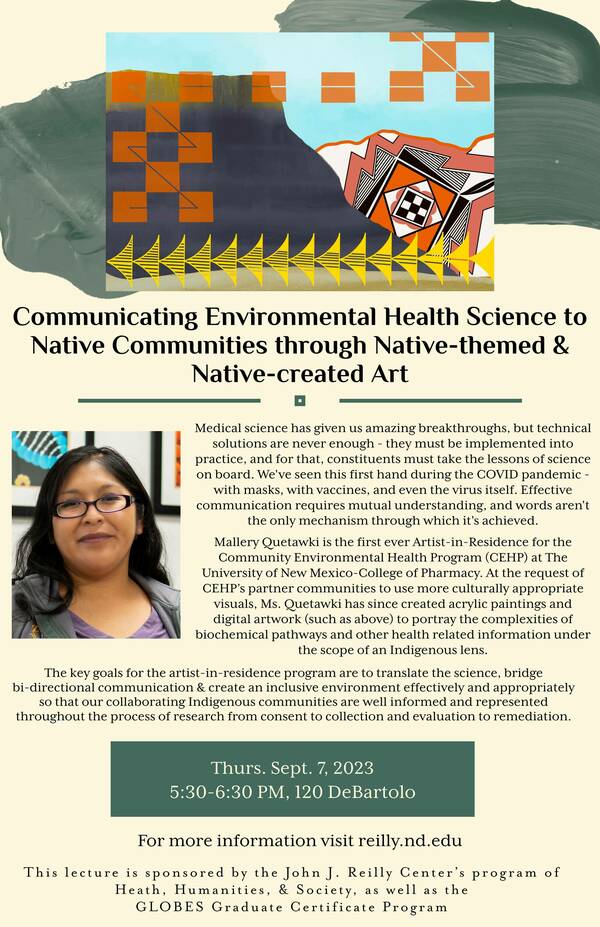M. Quetawki, BS, Artist-in-Resident/Communications and Outreach Specialist
1. Metals Exposure and Toxicity Assessment on tribal Lands in the Southwest (METALS), Center for Native Environmental Health Equity (EH) Research, Navajo Birth Cohort Study/ Environmental Influences on Child Health Outcomes (NBCS/ECHO) and the participant Engagement-Cancer Genomic Sequencing Center (PE-CGS) under the University of New Mexico Comprehensive Cancer Center (UNMCCC). UNM College of Pharmacy, University of New Mexico Health Sciences Center-Albuquerque, NM.
In December of 2016 the Community Environmental Health Program (CEHP) inaugurated its first ever Artist-in-Residence program by having Zuni Pueblo artist Mallery Quetawki begin the task of tailoring the program’s scientific research communication to be more culturally inclusive and relatable. At the request of CEHP’s partner communities to use more culturally appropriate visuals, Ms. Quetawki has since created acrylic paintings and digital artwork to portray the complexities of biochemical pathways and other health related information under the scope of an Indigenous lens. This “lens” is a product of not only the artist’s Pueblo upbringing and college science education but the collaborations with both keepers of Indigenous knowledge and the investigators involved in CEHP projects such as Native Environmental Health Equity (Native EH Equity), Metals Exposure and Toxicity Assessment on Tribal Lands in the Southwest (METALS), Navajo Birth Cohort Study/ Environmental Influences on Child Health Outcomes (NBCS/ECHO) and the participant Engagement-Cancer Genomic Sequencing Center (PE-CGS) under the University of New Mexico Comprehensive Cancer Center (UNMCCC).
The key goals for the artist-in-residence program are to translate the science, bridge bi-directional communication and create an inclusive environment effectively and appropriately so that our collaborating Indigenous communities are well informed and represented throughout the processes of research from consent to collection and evaluation to remediation.
